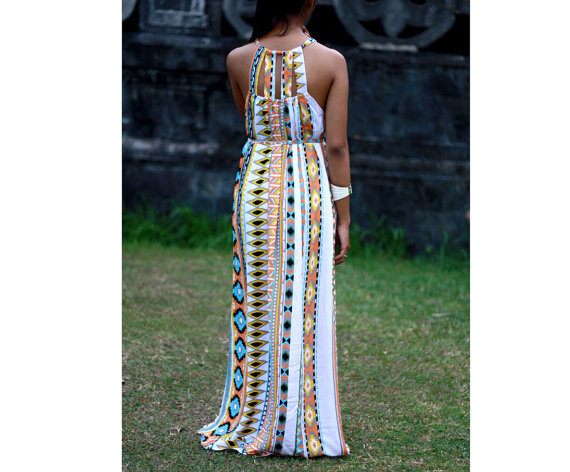Maxi dresses are the rage among the bourgeois crowd. They are fancy and are suitable for any occasion, whether it is a barbecue or an outdoor wedding. Some women think that they cannot pull off such a look. After all, floor-length dresses look best on long and lean body types. The trick is learning how to choose a style of maxi dress that flatters your body type or making your. Let me teach you how.
This is one of my favourite sewing projects. Apart from my obvious love for maxi skirts and dresses, I like making outfits that are easy to sew, and versatile to wear. This tutorial is suitable for both beginners and pros, and it will probably take less time to read it than it takes to boil an egg! This maxi dress style will require a belt, for fitting at the waist. For this tutorial, you can use a single piece of fabric that will go round your body twice, and be long enough to get to your desired length.
Tip for buying fabric: Choose fabrics that are soft and breathable, with a width of 45 inches and above. Fabrics with longer width are good for maxi dresses and you do not have to “join” (sew) pieces of fabrics together. The length of the fabric can be 2 yards and above, depending on your body size.
- Tools
- Fabric (knit, cotton, jersey, etc.)
- Sewing machine
- Tape measure
- Chalk
- Scissors
- Half-inch elastic
Instructions
1. Lay your fabric flat on the table, and ensure that there are no wrinkles. The fabric length should be twice your chest measurement. So if your chest measurement is 36, you need a fabric that is 72 inches. That should be 2 yards.
2. Fold the fabric lengthwise, with right sides together. This means that you are folding your fabric from the left to the right, and the part that we normally wear on the inside of our clothes, will be outside. This is so that you can take measurements on the fabric without staining it.
3. Ensure that all edges of the fabric align. Pin all edges to secure the fold.
4. Take the fabric to the machine, and leaving a seam allowance of at least 2 inches, sew a straight line down the edge of the fabric. This will be the edge on your right, where the two flaps meet.
5. Now you should have a large, round tube, with opening at the top and bottom of the fabric.
6. Fold the upper opening of the fabric down an inch. Then fold another inch, and secure with pins, or iron the fold.
7. Take the fabric back to the machine and run a straight stitch to secure the fold. Remember, the stitch should be at the edge of your fold, to secure it. Please do not sew a line in the middle of the fold. It should look like the hem on your store-bought clothes.
8. When sewing the straight line, stop shortly before the place where you started sewing the line, and make a backstitch. It should look like an incomplete work. This is where we will pass the elastic through.
9. Cut an elastic piece that is 5 inches smaller than your chest measurement, and pass it through the seam allowance that you just made. To pass elastic easily, attach it to a safety pin, and push the pin slowly through the fabric. You will see your fabric start to gather and squeeze together.
10. Once the elastic has gone all the way through the fabric, remove the safety pin, and sew the two edges of the elastic together.
11. Fold the open space where you threaded the elastic through, and sew it close.
12. Your maxi dress should now be gathered at the top, thanks to the elastic. It is like making an elastic waist skirt, but with its own elastic at the chest.
13. Fold the hem (bottom of fabric) twice, same way you did the top. Here, we are sewing a straight stitch all the way through, and not threading any elastic.
14. Add a waist belt, wide or thin, and your maxi dress is ready!


